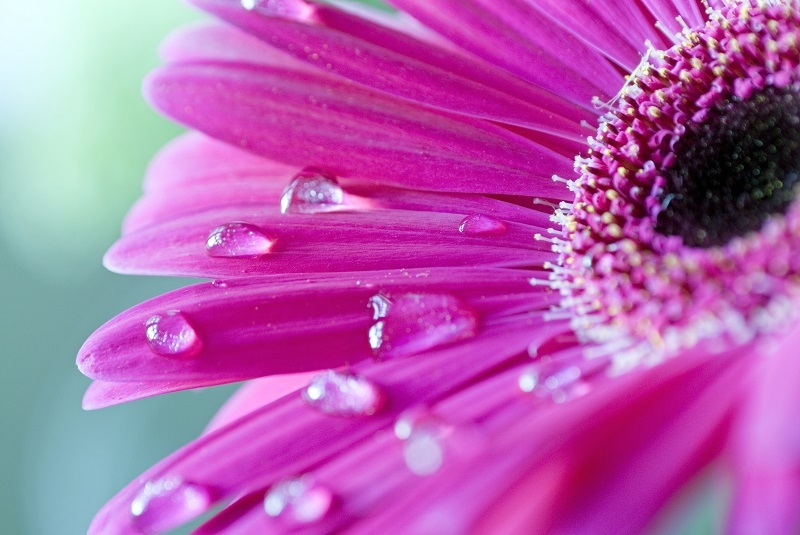Unveiling Techniques for Prolonging Poinsettia Beauty
Posted on 03/07/2025
Unveiling Techniques for Prolonging Poinsettia Beauty
Poinsettias are iconic symbols of the festive season, known for their vibrant bracts and rich green foliage. While many people enjoy their splendor only during the holidays, prolonging poinsettia beauty is possible with the right care techniques. This comprehensive guide unveils proven methods to help your poinsettias thrive well beyond the holiday season, ensuring their colorful allure graces your home for months to come.

Understanding Your Poinsettia Plant
Before mastering the art of keeping poinsettias beautiful, it helps to understand what makes these plants unique. Native to Mexico, poinsettias (Euphorbia pulcherrima) are tropical perennials that naturally bloom in winter. What most perceive as flowers are actually bracts--modified leaves--that come in red, white, pink, and more. The tiny yellow buds at their center are the real blooms.
- Light-sensitive bloomers: Poinsettias set their bracts when daylight shortens.
- Sensitive to temperature: They dislike cold drafts and sudden shifts in temperature.
- Prone to overwatering: These plants are susceptible to root rot if left in soggy soil.
Understanding these needs is the first step in mastering techniques for prolonging poinsettia beauty.
Optimal Conditions for Long-lasting Poinsettias
1. Ideal Lighting for Vibrant Bracts
Proper lighting is essential for maintaining poinsettia health and color. Provide a spot with indirect, bright sunlight for at least six hours per day. Too little light will result in faded bracts and leaf drop, while direct sunlight may scorch the leaves.
- Window Placement: East or west-facing windows provide optimal sunlight. Avoid cold glass contact by keeping plants a few inches from the window pane.
- Artificial Light: In low-light homes, supplement with fluorescent grow lights.
2. Maintaining the Perfect Temperature
Poinsettias prefer temperatures between 65-75?F (18-24?C) during sunny days and no lower than 60?F (15?C) at night. Avoid placing them near cold drafts or heating vents as sudden fluctuations can cause bract drop and decreased vibrancy.
- Keep away from frequently opened doors and windows in winter.
- Do not let leaves touch windows--cold shock causes leaves to fall.
3. Proper Watering Habits for Extended Beauty
Overwatering is the leading cause of poinsettia decline. The trick to prolonging poinsettia display is maintaining slightly moist--not soggy--soil.
- Check Soil Moisture: Water when the top inch feels dry to the touch.
- Drainage: Ensure your pot has good drainage; never let poinsettias sit in excess water trays.
- Watering Technique: Water evenly around the pot; empty saucers after an hour.
Tip: If your poinsettia is wrapped in decorative foil, poke holes through or remove it to prevent waterlogging.
Advanced Care: How to Keep Poinsettias Beautiful Longer
1. Humidity and Airflow Management
Poinsettias love humid environments. Low humidity, common in winter-heated homes, can dry out leaves.
- Place a tray of water with pebbles near the plant to increase humidity naturally.
- Avoid direct drafts from windows, doors, or vents.
- Good airflow prevents fungal diseases but avoid breezy exposure.
2. Fertilizing Techniques for Robust Growth
While poinsettias do not require fertilizing while in bloom, feeding becomes crucial for plants you wish to keep after the holidays.
-
Post-Holiday Fertilizing:
- Begin a monthly feeding schedule in late winter to spring with a balanced, water-soluble houseplant fertilizer (20-20-20 or similar).
- Reduce or stop fertilization during late fall as the plant prepares for blooming.
Encouraging Repeat Color: How to Rebloom Your Poinsettia
Want to see those stunning red bracts again next year? Inducing rebloom is a rewarding (if somewhat challenging) technique for prolonging poinsettia beauty into the next season.
Step-by-Step Guide to Reblooming Poinsettias
- Spring (March-April): When bracts begin to fade, cut the stems back to 4-6 inches tall. Repot in fresh soil if roots are crowded. Continue bright, indirect light, moderate watering, and monthly fertilizing.
- Early Summer: Move poinsettias outdoors once all chance of frost is gone. Choose a partially shaded spot. Pinch back new growth every month to encourage bushiness--stop pinching by early September.
-
September-October (Short-Day Treatment): Poinsettias require at least 14 hours of complete darkness nightly for about 8-10 weeks to set bracts for the holiday season.
- Each night (usually by 5 p.m.), place your plant in a dark closet or cover with a cardboard box.
- Uncover each morning to provide bright daylight for 8-10 hours.
- Any light interruption during the "dark period" will delay or prevent color development.
- November-December: If the blackout procedure is successful, colorful bracts will appear in time for the holidays! Resume regular care as detailed above.
Reblooming is tricky but deeply rewarding--and proves you are a master in the art of prolonging poinsettia splendor!
Common Threats to Poinsettia Longevity (and How to Avoid Them)
1. Leaf Yellowing and Drop
Sudden yellowing followed by leaf drop often points to:
- Overwatering: Roots suffocate in waterlogged soil.
- Underwatering: Leaves wilt and yellow when too dry for extended time.
- Cold Drafts: Poinsettias are sensitive to abrupt temperature drops.
Solution: Consistently check soil moisture and adjust your plant location to avoid exposure to cold drafts.
2. Pests and How to Manage Them
Common pests that affect poinsettias include whiteflies, spider mites, and aphids. Early detection is crucial for maintaining poinsettia beauty long-term.
- Inspect the undersides of leaves weekly.
- Remove pests with a gentle spray of water or wipe with a mild soapy solution.
- For more severe infestations, use insecticidal soap or neem oil, following instructions carefully.
3. Fungal or Bacterial Disease
Wilted or mushy stems may be symptomatic of root rot or other diseases.
- Prevent by watering only when needed and ensuring adequate air circulation.
- Remove and discard affected leaves or stems immediately to prevent spread.
Poinsettia Aftercare: Year-Round Tips
With attentive care, poinsettias can thrive as perennials and even be grown outdoors in warm climates.
- After Holidays: Reduce watering as the plant goes dormant and bracts fade.
- Spring: Prune back and provide regular feeding to support new growth.
- Summer: Acclimate slowly to outdoor conditions if desired.
- Autumn: Bring indoors before first frost and begin short-day treatments for reblooming.
Whether you wish to keep your poinsettia as a green houseplant or push for fresh color next holiday season, understanding its cycles and needs is the key to prolonged ornamental value.

Frequently Asked Questions About Prolonging Poinsettia Beauty
Can I plant my poinsettia outside?
Yes, in USDA hardiness zones 9-11, poinsettias can be moved outdoors after frost and will grow as a perennial shrub. Be sure to slowly acclimate the plant to outdoor light and protect from midday sun.
Are poinsettias toxic to pets?
Poinsettias are only mildly toxic--ingested leaves may cause mild stomach upset in cats or dogs, but are rarely dangerous. Keep out of reach to avoid issues.
My poinsettia has wilted--can it recover?
If wilt is from dryness, a thorough watering and placement in a bright location may revive it. Severe overwatering damage is harder to remedy--repotting in fresh, well-draining soil may help.
How long do poinsettias typically last?
With high-quality care, holiday poinsettias can easily last 4-6 months indoors. With ongoing maintenance (and some dedication!), they can live for years as houseplants.
Conclusion: Maximizing the Lifespan and Color of Your Poinsettia
Unlocking the secrets to extend poinsettia life revolves around careful attention to light, temperature, moisture, and annual growth cycles. By following the proven techniques above, you can prolong poinsettia beauty and enjoy their festive colors well beyond the New Year--or even for years to come.
- Provide consistent bright, indirect light and steady temperatures.
- Practice mindful watering and promote humidity.
- Feed with balanced fertilizer post-holiday for sustained growth.
- Use the blackout technique in autumn for repeat blooming displays.
Bask in the rewards of attentive care as your poinsettias display their kaleidoscopic bracts month after month. Whether you're a novice or an indoor gardening enthusiast, these techniques for prolonging pointeisttia beauty will keep your favorite festive plant lush, brilliant, and full of life.
Start today--your extraordinary, long-lasting poinsettia awaits!
Latest Posts
Top Picks: Office Plants That Thrive with Little Care
Long-Lasting Elegance: Top 12 Flowers for Lasting Blooms
Uncover the Flower That Speaks to Your Heart





